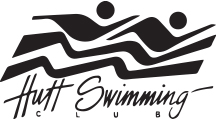More Information
Governing Bodies
New Zealand Swimming Federation
The New Zealand Swimming Federation governs all club swimming throughout the country. It is made up of local swimming authorities and associations.
Wellington Swimming Authority
The regional body governing the Hutt Swim Club is the Wellington Swimming Authority.
This group body comprises swim training, swim education, synchronised swimming, and diving authorities, and associated masters and waterpolo authorities.
Club can provide two delegates to this body.
References
Further information can be found in the following:
- Hutt Swim Club Constitution
- Rules of the Hutt Swim Club
- New Zealand Swimming Federation
- Wellington Swimming Authority
- Hutt Swim Club Programme
- Hutt Swim Club Committee minutes and AGM minutes
- Wellington Swimming Authority Programme
- Current list of committee members and contact numbers
Glossary of Swimming Terms:
- Affiliation fee: Annual fee paid to Swim New Zealand which allows a swimmer to compete.
- Alternate: In a meet with finals, the swimmers in 9th and 10th place. These swimmers must show up to marshalling at the finals session in case one of the finals swimmers cannot swim.
- Bilateral breathing: Most common in freestyle. Breathing to both the left and right side, many different combinations of stroke patterns may be used to achieve this.
- Blocks: The starting platforms located behind each lane. Blocks have a variety of designs and can be permanent or removable, but also incorporate a bar to allow swimmers to perform backstroke starts.
- Breaststroke: Arms are moving simultaneously under the water horizontally, with legs doing a frog kick.
- Butterfly: Arms move together in an ‘up and over’ motion, while legs complete two dolphin actions per stroke cycle.
- Chief timekeeper: A swim meet official in charge of the timekeepers in each lane.
- Converted time: A time converted from a short course to a long course time, or vice-versa.
- Div 2: Division 2 National Meet for 13-18 year olds; qualification times required per age group.
- Deadline: The date meet entries must be received by email to the recorder so that the entries can be sent to the meet host for processing. Entries cannot be made after this date.
- DQ: A disqualification; call made by the IOT Duty club.
- Entry Times: Some meets have entry times to qualify. These are the slowest time that is accepted.
- Note: the converted times are used for these. Also some meets do not allow NT entries. Please speak to your coach if you are in this situation and wish to enter a meet. Times achieved at club race nights can be used as entry times so try and swim in different races & distances to obtain entry times.
- FINA: The international body which oversees the rule-making and administration of swimming world-wide.
- Final Results: The printed results with all placing’s for each event, usually by age group. These are posted on a bulletin board poolside.
- Flags: Pennants that are suspended over the width of each end of the pool approximately 5 metres from the wall. A visual signal for backstroke that wall is approaching.
- Freestyle: Another name for the front crawl.
- Heats: All of the swimmers entered in the event are divided into heats, or groups of swimmers. The heats are most often swum from slowest group to fastest group for each event.
- IM: Individual Medley. An event where a swimmer competes at a distance of 100, 200 or 400 metres in the following order: Fly, Back, Breast, and Free.
- Inspector of turns (IOT): Observes turns from each end of the pool to ensure compliance with the rules applicable for each stroke.
- Juniors: National swim meet for 12 year olds and younger; qualification times required per age group.
- Lane Ropes: The dividers used to set out the lanes in a pool. Lane ropes are segmented 1m apart and are used to dissipate waves.
- Lap Counter: Large numbered cards used during longer freestyle events 800m and 1500m. Used so swimmers can see how many laps they have to go.
- Long Course (LC): Events swum in a 50 metre pool. Marshal: Is responsible for assembling the swimmers prior to each event.
- Marshalling area: The area in which swimmers gather prior to a race and are lined up by heat and lane by an official.
- Medley: All strokes are used. This can be an individual event with one person swimming all strokes. Or it can be a relay event with four people, each swimming a different stroke. The order for individual medley is: butterfly, backstroke, breaststroke, freestyle. The order for medley relay events is: backstroke, breaststroke, butterfly, freestyle.
- Meet Director: The official in charge of the administration of the meet.
- NAGS: National Age Group Champs; Division 1 swimming; ages 13-18. Qualification times required per age group. Held in Wellington in April each year.
- NT: No Time. Swimmer has not competed in this race before so has NT.
- Opens: National Division 1 Meet for any swimmer over 13: tougher qualifications times than NAGS. Held in March each year.
- Open water swim: Swimming in water other than in a pool including rivers, lakes or oceans.
- Pace clock: The big clock on the wall or deck, used for interval training.
- PB: A personal best time.
- Pool Deck: The area around a swimming pool. During a meet, only ‘authorised people’ may be on deck. This is generally just team managers, officials, coaches and swimmers.
- Programme: A compilation of all events and heats swum in a particular swim meet session. The proceeds from buying a programme at the door goes to the organisation which is running the meet.
- Psych Sheets: The printed collection of all entries by event for a meet. These are available on the Swim Waikato website usually about 3-4 days prior to a meet.
- Pull: A drill where swimmers place a pull buoy between their legs to keep them afloat, replacing kicking and staying balanced.
- Qualifying time: The official time necessary to enter a particular event. If a meet has qualifying times, they will be printed with the flyer.
- Race entry fees: Paid per race. Typical fees range from $7.00-$15.00. Race fees are invoiced by our treasurer once meet entries close.
- Referee: The head official at a swim meet.
- Scratch: To take a swimmer out of a race due to injury, sickness, fatigue. Must be approved by the coach.
- Seed time: The entry time for a race in which a swimmer has previously competed; their best time for that event.
- Short Course (SC): Events swum in a 25 metre pool.
- Six beat kick: six kicks per full arm stroke. (3 kicks per ‘hand hit’).
- Springs: National Short Course Champs: 13-18 year olds. Qualification times required per age group. Held in Wellington end of September each year.
- Starter: The starter is responsible for giving all swimmers a fair start. The starter will start.
- Swim-Off: In a meet with finals, in case of a tie which will determine whether a person will make a final or not, a swim off is held at the end of the session. Both swimmers compete in the event again with the winner making the final.
- Team Manager: The club parent who is responsible for sending swimmers to marshalling on time. In bigger meets, this person also checks who has qualified for finals, collects ribbons and DQ notifications, and must scratch swimmers from upcoming races.
- TF: Timed Finals. Each race is only swum once. Results are based on best times for each age group from all the heats.
- Timekeepers: Use stopwatches to record the official time for the swimmer in their lane. Some venues use automatic timing systems with touch pads.
- Touch pads: The removable plate (at the end of the pool) that is connected to an automatic timing system. A swimmer must properly touch the touchpad to register an official time in a race.
- Tumble turn: Similar to a summersault under the water upon reaching the pool wall. A tumble turn is faster than a ‘touch and go’ once the technique is mastered.
- Warm up: Usually an hour prior to a meet starting. Consists of stretching and a set of swim intervals to warm up the swimmer for racing. All competing swimmers must turn up on time for warm up and report to the coach.
- Whistle lap: In a freestyle distance race (800 & 1500), a whistle is blown as the swimmer reaches their final lap. Useful Website Take Your Marks www.takeyourmarks.com
Come to a Hutt Swimming Club open night to see us in action
The Hutt Swimming Club operates out of Huia Pool
Tuesday 6:30-9pm
Saturday 6:50-7:50am
Huia Pool, Huia Street, Lower Hutt, Wellington


